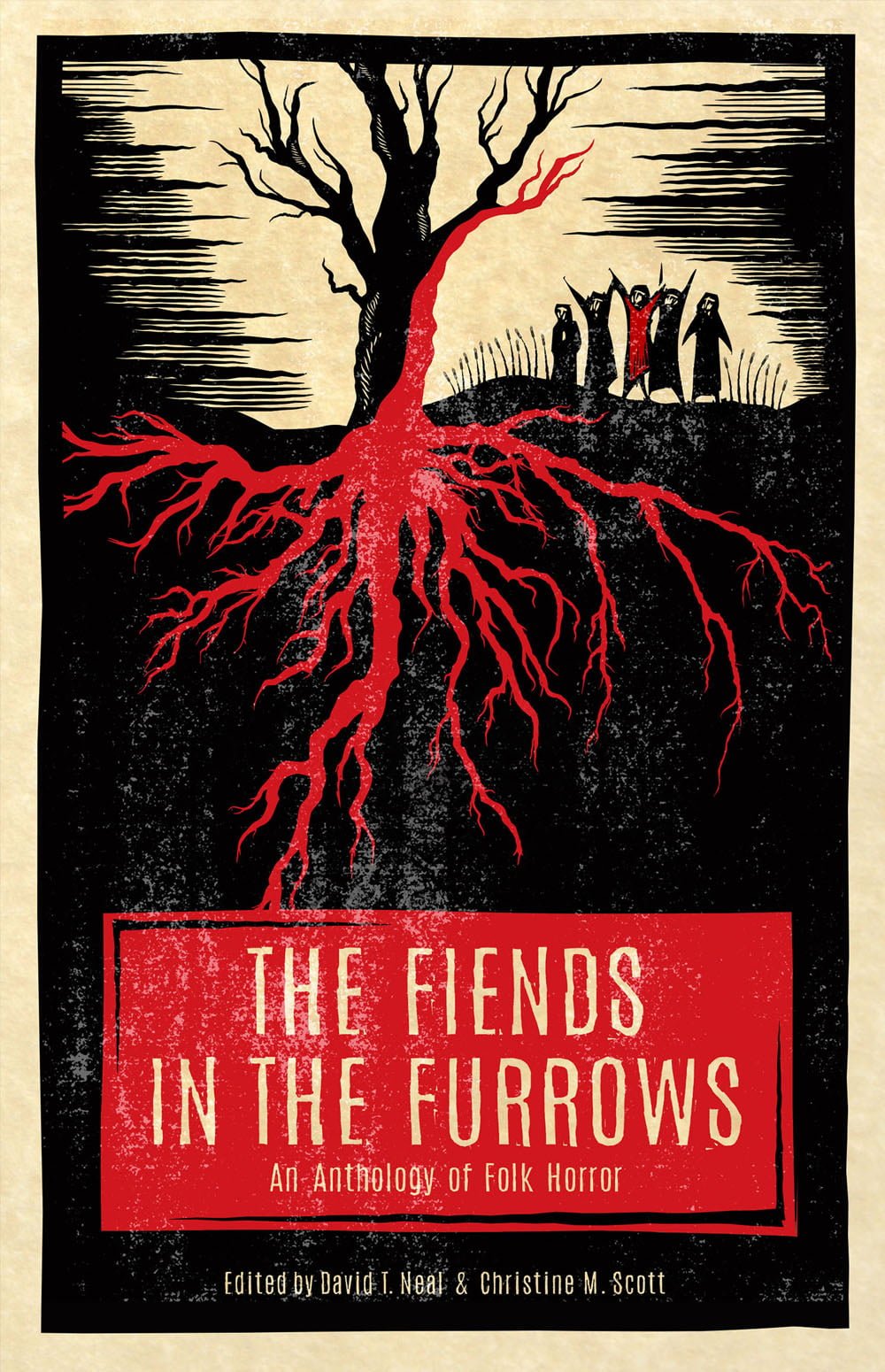AUTHOR SPOTLIGHT: S.T. Gibson

A graduate of the creative writing program at the University of North Carolina at Asheville and the theological studies program at Princeton Seminary, S.T. Gibson is the recipient of the Topp Grillot Award for Poetry and the Olivia Grudger Award for Nonfiction. She is the author of the paranormal novella Odd Spirits, and her poetry has been featured in Wordsdance magazine. You can connect with her on her website stgibson.com, or on twitter @s_t_gibson.
The Fiends in the Furrows: An Anthology of Folk Horror
“Revival”
Autumn, no contest. The spicy scent of decaying leaves, the spooky stories over spiced cider, the cold-fingered winds, the paper-thin veil between this world and the next…What’s not to love? Then again, my birthday falls on All Saints Day, so I’m partial.
What drew you to Folk Horror?
Historically folk horror has been very concerned with the muddied lines between older religions and newer ones, and the ways cultural memory gets buried only to resurge up in new, unexpected, even horrifying ways later. I love exploring the tangled emotions religious sentiment dregs up in people, and the way our distinctions between “magic” and “faith”, and “paganism” and “civilized religion” are largely matters of perspective. Folk horror has done a great job of teasing out these themes in the context of Western European rural life, and I wanted to bring those questions to the American South, where I was raised.
What does Folk Horror mean to you? How would you describe it to someone?
Folk horror is one of those wonderful genres that situates itself squarely in the natural landscape of its setting, whether that’s an English moor or a Puritan settlement in the New World. Besides this fixation on the (usually cursed and hungry) land, folk horror brings to mind stories about the ways sins of the past haunt communities in the present, the resilience of folk belief against modernism, the power religion has to corrupt, liberate, or annihilate, creeping mass hysteria, and inglorious characters with filthy secrets.
What is the most Folk Horror thing you’ve seen/encountered in your community?
I was once napping on a stone monument in a little graveyard behind a church that had been burned to the ground thrice, and I’m pretty sure a church grim padded up to snuffle at my hand. When I opened my eyes it was gone, but I know I heard it trotting across the dry leaves moments before.
What writing projects do you have next?
I just published a paranormal novella about a marriage between magicians, and now I’m back at work on a fantasy adventure novel about a gang of con goblins, arms dealers, diplomats, and pirates out to bring down the criminal queenpin who screwed them all over. However, I’m also hoping to find time to work on some short queered folklore stories, and the collection of Biblical poetry I’ve been chipping away at for years.



I love ST Gibson … I just tripped upon her searching for southern quotes, I am a fan of her wordsmanship … ( word woman’ship) I am a musician writing my first book and she will be my inspiration from the moment on …. wyzard